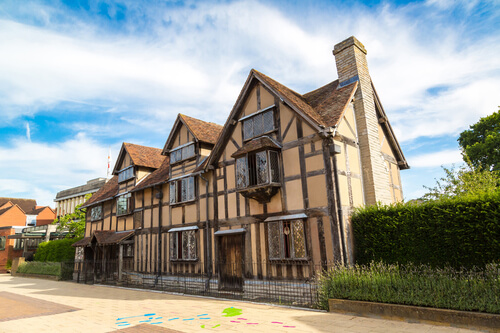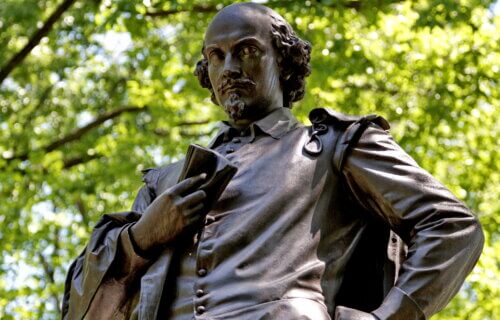BRISTOL, United Kingdom — Anyone with a successful sibling can relate to the pressures of living in a brother’s or sister’s shadow. Joan Shakespeare, the younger sister of William, arguably the greatest writer of all time, had largely been relegated to anonymity in the centuries since her death. Now, however, a groundbreaking discovery from the University of Bristol has finally shed some light on the world-famous playwright’s sibling.
Thanks to an analysis of digital copies of a quite rare and obscure 17th-century Italian religious text, researchers have uncovered that a long-lost document previously attributed to William Shakespeare’s father actually belonged to his sister Joan.
The document itself is a treatise in which the author pledges to die a death befitting of a Catholic. At the time of the document’s composition in English history, practicing Catholicism was strongly discouraged. Over a century after being written, around the year 1770, the treatise was found hidden in the rafters of the Shakespeare House in Stratford-upon-Avon by a bricklayer.
After that, the tract underwent analysis by two early Shakespeare experts before eventually being lost somewhere along the line. Both of those experts believed it had to have belonged to Shakespeare’s father, John, who died in 1601 – implying John Shakespeare was a devout Catholic in an Elizabethan world where people risked torture for their faith. Later scholars theorized the document was a fake designed to give the impression of being composed during John’s lifetime.

In actuality, the treatise is a direct translation of an Italian text: “The Last Will and Testament of the Soul.” Professor Professor Matthew Steggle, from the University’s Department of English, used Google Books and other internet archives to locate early editions of the text in Italian and six additional languages. Many of the editions noted by Prof. Steggle are found across the libraries of Europe and only survive in a single copy. These facts prove the Shakespeare document is actually from several years after John Shakespeare died. That means the only plausible author of the manuscript is the other “J Shakespeare” – Joan, who lived between 1569 and 1646.
💡What To Know About William Shakespeare:
- William Shakespeare, the English playwright and poet from the late 16th and early 17th centuries, is widely regarded as one of the greatest writers in the English language and the world’s preeminent dramatist.
- He wrote 39 plays, 154 sonnets, and 2 long narrative poems, with his works spanning tragedy, comedy, and historical genres, including famous plays like “Hamlet,” “Romeo and Juliet,” and “Macbeth.”
- Shakespeare’s influence on the English language and literature is profound, introducing new vocabulary and phrases, and his themes of love, power, jealousy, betrayal, and the supernatural remain relevant and widely studied today.
Joan was five years younger than her brother William. During the tail end of the legendary author’s life, she was his only significant living relative other than his wife and daughters. She lived in Stratford-upon-Avon all her life and is thought to have married a penniless tradesman. Living quietly in part of the old Shakespeare family house, she mothered four children and outlived both her husband and her famous sibling by three decades.
“Even thirty years ago, a researcher approaching a problem like this would have been based in a single big research library, using printed catalogues and even card catalogues to try to find copies of this text. But research libraries have now made many of their resources available digitally, so that it is possible to look across many different libraries in different countries at once, and what’s more, you can look through the whole text, not just at the title and other details,” Prof. Steggle says in a media release.
“There are only seven surviving documents from Joan’s lifetime that even mention her by name. Virginia Woolf wrote a famous essay, ‘Shakespeare’s sister,’ about how a figure like her could never hope to be a writer or have her writing preserved, so she has become something of a symbol for all the lost voices of early modern women. There are hundreds of thousands of words surviving from her brother, and until now none at all, of any description, from her.”
Here are a few quotes from the document we now know belonged to Joan Shakespeare:
“I, [Joan] Shakespeare, do protest that I will willingly accept of death in whatsoever manner it may befall me, conforming my will unto the will of God; accepting of the same in satisfaction for my sins and giving thanks unto his divine majesty for the life he hath bestowed upon me.”
“I, [Joan] Shakespeare, do here protest that I do render infinite thanks to his divine majesty for all the benefits that I have received as well secret as manifest… but above all for his so great expectation of me to penance, when he might most justly have taken me out of this life when I least thought of it, yea even then when I was plunged in the dirty puddle of my sins.”
“I, [Joan] Shakespeare, do protest that I am willing, yea I do infinitely desire and humbly crave, that of this my last will and testament, the glorious and ever Virgin Mary, mother of God, refuge and advocate of sinners, whom I honour specially above all other saints, may be the chief Executrix together with these other saints my patrons, Saint Winifred, all whom I invoke and beseech to be present at the hour of my death that she and they may comfort me with their desired presence and crave of sweet Jesus that he will receive my soul into peace.”
St. Winifred, called a patron saint in this passage, was a seventh-century Welsh princess who apparently survived being beheaded by a disgruntled suitor, later going on to found a nunnery. Winifred, whose story revolves around repelling unwanted sexual advances by men, was particularly venerated by women during this period, serving as another sign that the document belonged to Joan.
At the time, pledges of this nature were all about taking control of one’s own death. In other words, recording a statement about final beliefs before the approach of death impairs any mental capacity. The Joan Shakespeare document is the only known British example, and there are only a handful known across the Continent.
The study is published in the journal Shakespeare Quarterly. This study is also part of Professor Steggle’s work on a biography of Shakespeare for Reaktion Books, due for publication in 2024.
